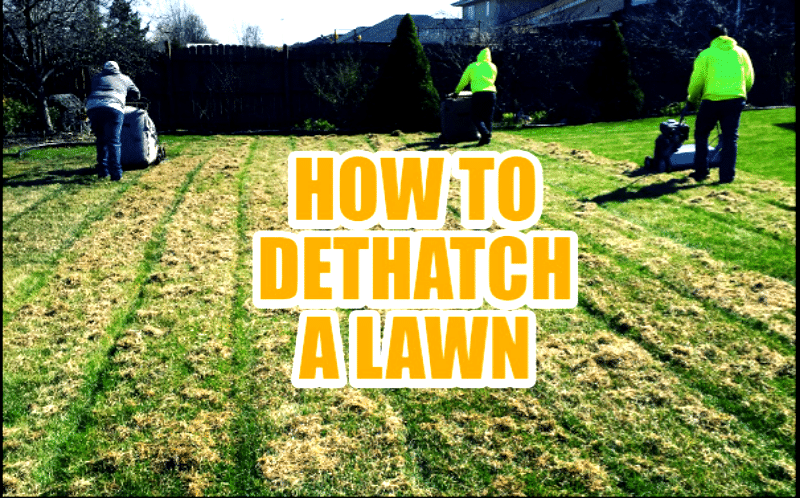What does it mean to Dethatch your Lawn?
Dethatching a lawn means clearing out the layer of dead grass, leaves, and other organic debris that accumulates on the top of your lawn over time.
The layer of dead weeds is called thatch and can build up to a thickness that can prevent water, air, and nutrients from reaching the soil and the grassroots, leading to a thin and unhealthy lawn.
When to Dethatch a Lawn?
Dethatching a lawn is often done in fall and spring if you don’t know when your lawn needs dethatching.
You can dethatch your lawn more than once in a year. How often you should dethatch your lawn depends on the thickness of the field, climate, and the volume of thatch on your lawn.
For example, dethatching can hurt your lawn if you don’t water the field after the exercise.
Note that it takes 1 to 2 months for the lawn to recover after clearing the dead grasses.
If you don’t want your lawn to look bad or die after dethatching, you should use the right machinery for dethatching, water your lawn to aerate it, add fertilizer to your lawn after removing the dead grasses, and you can also mow it thereafter.
Tools that are Needed to Remove Thatch from Lawn
Dethatching can be done manually with a lawn rake, or with a power dethatcher or vertical mower, which is a machine that removes thatch by cutting vertically through the turf and pulling up the debris.
You can also outsource a professional lawn management service, or rent a dethatcher to get the job done.
Here are some farm tools you can use to dethatch your garden or field.
Lawn rake
A sturdy lawn rake is the most basic tool for removing thatch from your lawn.
Choose a rake with sharp and sturdy tines that won’t bend easily. Use it to rake the lawn vigorously, pulling up the thatch as you go.
To make things easy, you can mow the lawn first, then dethatch it.
Power rake or dethatcher
If you have a large lawn or a lot of thatch to remove on your field, a power rake or dethatcher is ideal for the job and can save you time and energy.
These machines use metal blades or tines to dig into the soil and pull up the thatch.
Power rakes can be rented from home improvement stores or garden centers.
Lawn aerator
An aerator is a machine that punches holes in the lawn to help water, air, and nutrients penetrate the soil.
This tool can help break up and loosen the thatch layer, making it easier to remove with a rake or dethatcher.
Leaf blower
A leaf blower can be used to blow away the loosened thatch after raking or power raking.
This can make the cleanup process faster and more efficient.
Compost bin
Rather than throwing away the thatch, consider composting it. Thatch can be a great source of organic material for your compost bin, and can help improve the health of your soil and lawn over time.
Remember to water your lawn thoroughly after removing thatch, as this will help it recover and promote healthy new grasses.
Conclusion
Dethatching is important for maintaining a healthy lawn because it helps to promote better air circulation, drainage, and nutrient uptake by the grassroots.
It can also improve the overall appearance of the lawn by allowing the grass to grow more evenly and preventing bare patches from forming.
However, dethatching should only be done when necessary, as too much dethatching can damage the grass roots and soil structure.








